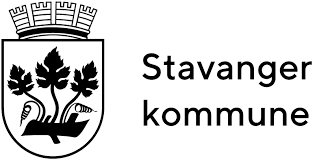Stavanger
La quatrième plus grande municipalité de Norvège gère la collecte des déchets avec des conteneurs de stockage souterrains, des capteurs IoT, une flotte de camions allégée et des flux de données orchestrés par la plateforme Boomi Enterprise.
Objectifs commerciaux
La municipalité de Stavanger collecte le verre, le papier, les déchets organiques et résidentiels dans les maisons et dans des conteneurs de stockage équipés de capteurs dans huit municipalités norvégiennes. Chaque conteneur de stockage est alimenté par l'énergie solaire et équipé de capteurs qui signalent les niveaux de carburant et de déchets aux chauffeurs de camion et à l'équipe de maintenance.
Stavanger utilise plusieurs systèmes informatiques différents, qui communiquent en permanence pour assurer l'efficacité opérationnelle. L'entreprise avait besoin d'un système flexible pour harmoniser les données qu'elle recevait de sa flotte et de ses conteneurs de déchets, afin d'améliorer le service global et l'efficacité.
Les défis de l'intégration
Les données collectées par Stavanger devaient être gérées manuellement. Ces données étaient stockées à la fois localement et dans le nuage, souvent dans des systèmes disparates. Par conséquent, plusieurs versions pouvaient exister simultanément, ce qui compliquait la tâche de l'équipe de maintenance pour trouver les informations les plus récentes et les plus à jour.
Stavanger avait besoin d'intégrer les données provenant des capteurs, du système de contrôle d'accès et de ses systèmes de gestion de back-office. Pour rationaliser ce processus, automatiser le flux d'informations, ajouter de la flexibilité et augmenter l'efficacité, la municipalité s'est tournée vers Boomi.
Comment Boomi nous a aidés
Avec l'aide de son partenaire Fieldata, Stavanger a mis en place la plateforme Boomi Enterprise pour rationaliser la gestion des API et faciliter le flux d'informations.
En utilisant Boomi Integration, les ingénieurs de Fieldata ont connecté de nouveaux capteurs IoT dans des conteneurs enterrés avec un système communiquant avec des tablettes transportées par les conducteurs de la flotte. Une autre intégration connecte un portail web que les résidents locaux peuvent utiliser pour demander le ramassage de certains types de déchets. La plateforme low-code de Boomia éliminé le besoin de compétences intensives en programmation de données, rendant ces intégrations rapides et faciles.
Résultats
Avec Boomi, Stavanger a constaté un changement positif pour son activité et pour le service qu'elle offre aux citoyens de sa région, notamment :
- Aperçu en temps réel des opérations via un portail unique pour l'administration du système de capteurs
- Création d'une infrastructure informatique entièrement modulable qui lui permet de se développer
- Commandes de services automatisées sur la base de messages d'état/d'erreur
- Réduction des émissions de CO2 grâce à une efficacité opérationnelle accrue
- 24 jours par an économisés grâce à l'élimination des processus manuels, ce qui permet de gagner du temps productif à haute valeur ajoutée


 English
English Deutsch
Deutsch Français
Français Italiano
Italiano 日本語
日本語